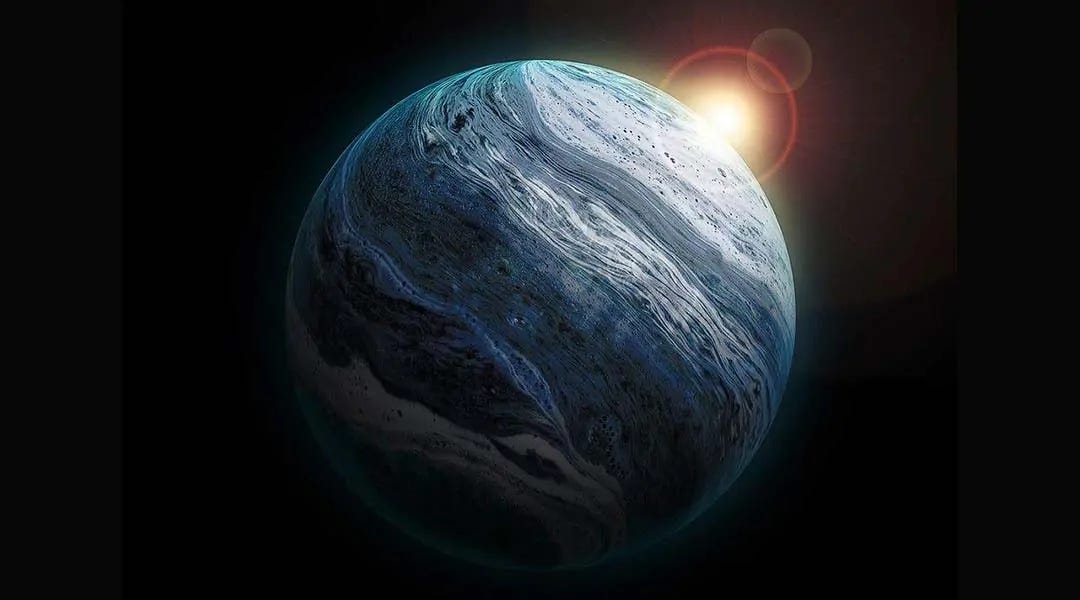In the vast expanse of our universe, the James Webb Space Telescope (JWST) has cast its gaze upon a world unlike any other—a distant exoplanet, TOI-270 d, that presents a remarkable case of a possible “waterworld” harboring a boiling ocean that spans its entire surface. This exoplanet, situated about 70 light years from Earth and boasting twice Earth’s radius, has revealed through JWST’s keen observations a chemical composition indicative of a hydrogen-rich atmosphere with traces of methane, carbon dioxide, and notably, water vapor. These findings, spearheaded by astronomers from the University of Cambridge, have propelled the scientific community into a fervent discussion about the nature of TOI-270 d and the potential for habitable conditions beyond our solar system.
At the heart of this intrigue is the debate surrounding the exoplanet’s environmental conditions. On one hand, the presence of water vapor along with the absence of ammonia (a compound expected in a hydrogen-rich atmosphere) suggests an oceanic world, a so-called “hycean” world, where the vast ocean under a thick, hydrogen-rich atmosphere could shape a unique planetary environment. However, the vision of a tranquil, azure expanse is quickly dispelled by the revelation that the ocean could be more than 100 degrees Celsius—possibly even reaching the scorching temperatures of 4,000C according to a Canadian team’s additional observations. This extreme heat suggests that the ocean, if it exists, would be anything but hospitable, existing in a supercritical state where the lines between liquid and gas blur into a dense, hot fluid.
The concept of a tidally locked exoplanet further adds to the enigma of TOI-270 d. With one hemisphere perpetually facing its star, bathing in light and unimaginable heat, and the other shrouded in eternal darkness, the temperature contrast on this planet would be stark. The day side’s boiling ocean and the potentially habitable conditions on the night side, as speculated by some researchers, depict a world of extremes, with conditions varying drastically from one hemisphere to the other.
In the midst of this heated debate, both groups of astronomers concur on the discovery of carbon disulfide in the planet’s atmosphere, a compound associated with biological processes on Earth. While there’s no direct evidence of life, such as the detection of dimethyl sulphide (DMS), this discovery underscores the potential of JWST not just in finding new worlds but in unlocking the secrets of their atmospheres, possibly pointing us toward signs of life beyond our own planet.

As we stand on the brink of these groundbreaking discoveries, the importance of careful communication and interpretation becomes clear. The allure of finding another habitable world is strong, but as noted by the researchers involved, it’s crucial to temper excitement with caution. The universe is vast and full of mysteries, and each discovery brings us one step closer to understanding our place within it.
TOI-270 d represents not just a potential “waterworld” but a beacon in our quest for knowledge, pushing the boundaries of what we know about planets beyond our solar system. As JWST continues to peer into the depths of space, who knows what other secrets lie waiting to be uncovered? The search for habitable worlds and the possibility of life beyond Earth continues, with each observation offering a new piece of the puzzle in our understanding of the cosmos.






One thought on “Exploring the Depths of a Boiling Ocean: The Enigma of Exoplanet TOI-270 d”
Comments are closed.